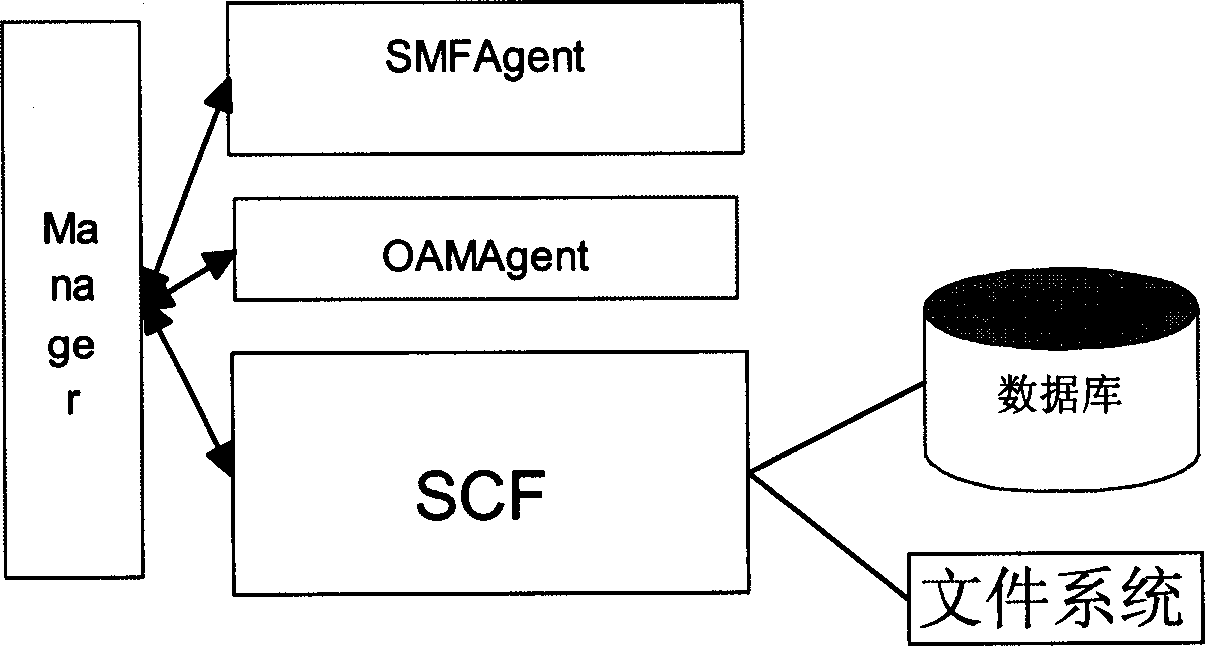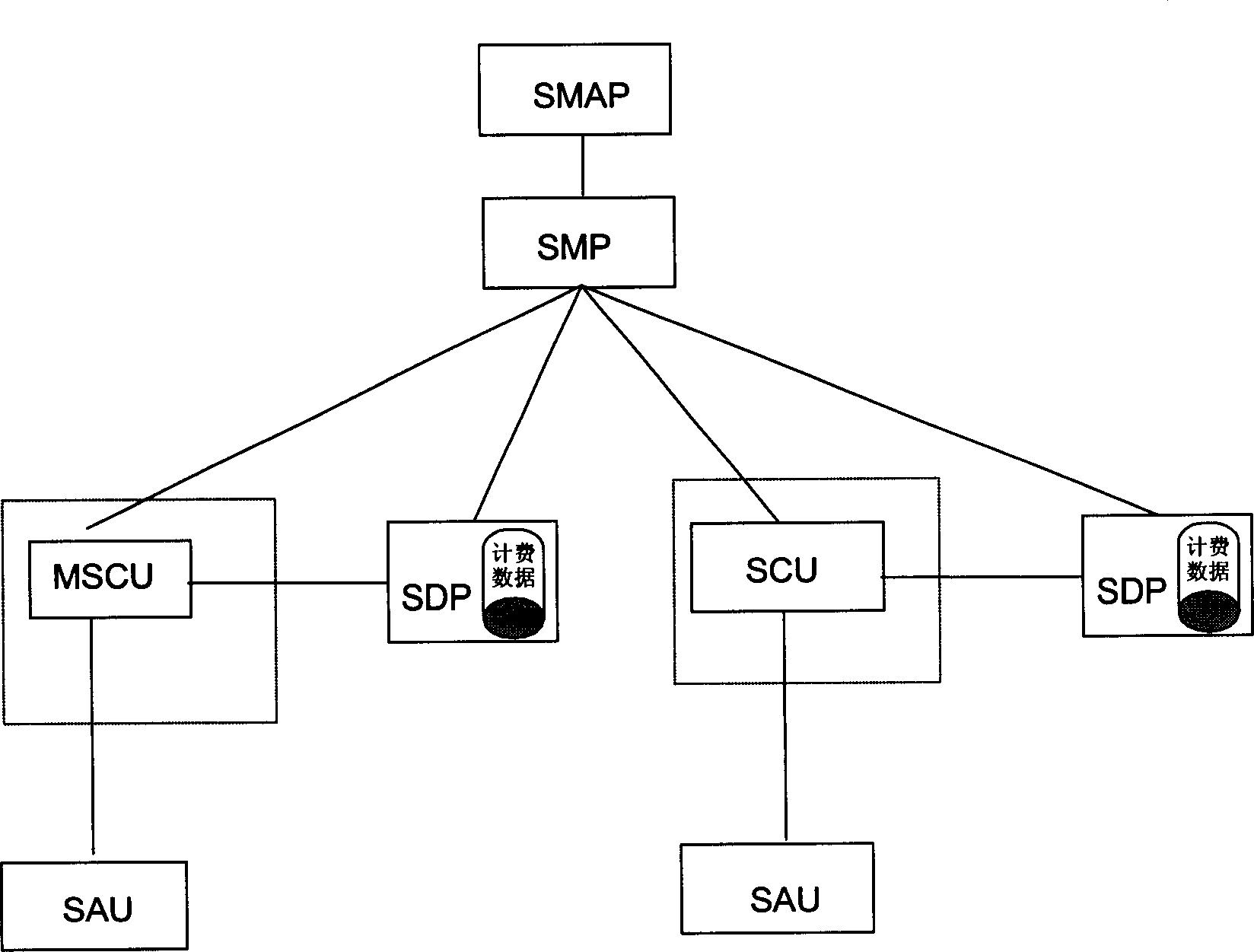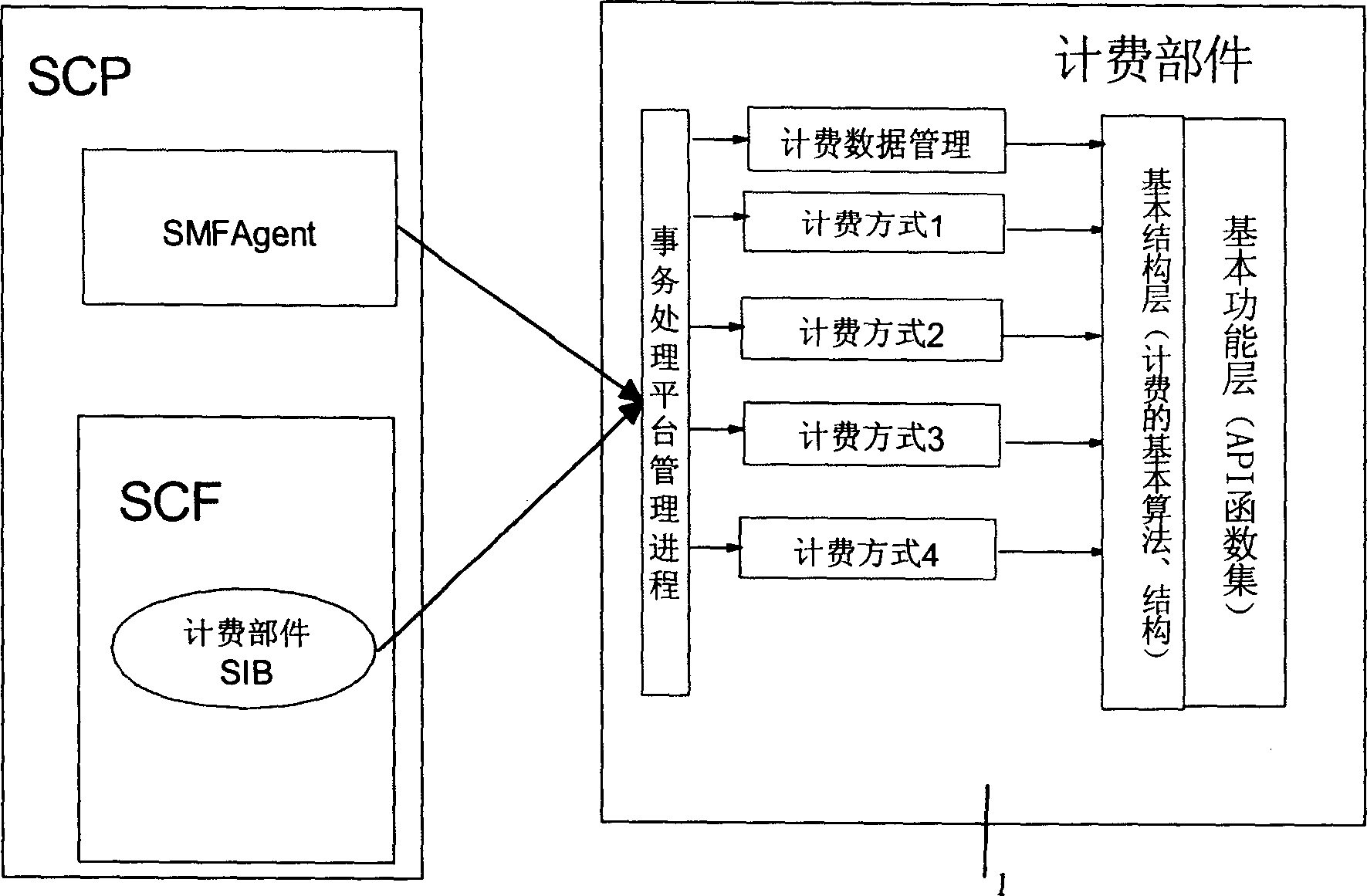Fee counter for intelligent net
A billing device, technology of intelligent network
- Summary
- Abstract
- Description
- Claims
- Application Information
AI Technical Summary
Problems solved by technology
Method used
Image
Examples
Embodiment Construction
[0037] The present invention will be described in further detail below through specific embodiments and in conjunction with the accompanying drawings.
[0038] Such as figure 1 Shown is a schematic diagram of the working mode of the SCP in a charging instance in the prior art, and its charging point is at the SCP. Its billing SIB and business logic closely interact in a business logic file, which is interpreted and executed by SCF in a unified manner. The working method is as follows:
[0039] Manager (main control process) sends the message to MSCU (main service control unit, SCF in the figure), and the main control module is responsible for scheduling automaton and business logic processing and related charging SIB, and completing related calculation of charging Generate bills and update database records; all billing-related codes are fully coupled with business logic processing codes.
[0040] The corresponding system configuration method is as follows: figure 2 ,Depend...
PUM
 Login to View More
Login to View More Abstract
Description
Claims
Application Information
 Login to View More
Login to View More - R&D
- Intellectual Property
- Life Sciences
- Materials
- Tech Scout
- Unparalleled Data Quality
- Higher Quality Content
- 60% Fewer Hallucinations
Browse by: Latest US Patents, China's latest patents, Technical Efficacy Thesaurus, Application Domain, Technology Topic, Popular Technical Reports.
© 2025 PatSnap. All rights reserved.Legal|Privacy policy|Modern Slavery Act Transparency Statement|Sitemap|About US| Contact US: help@patsnap.com



